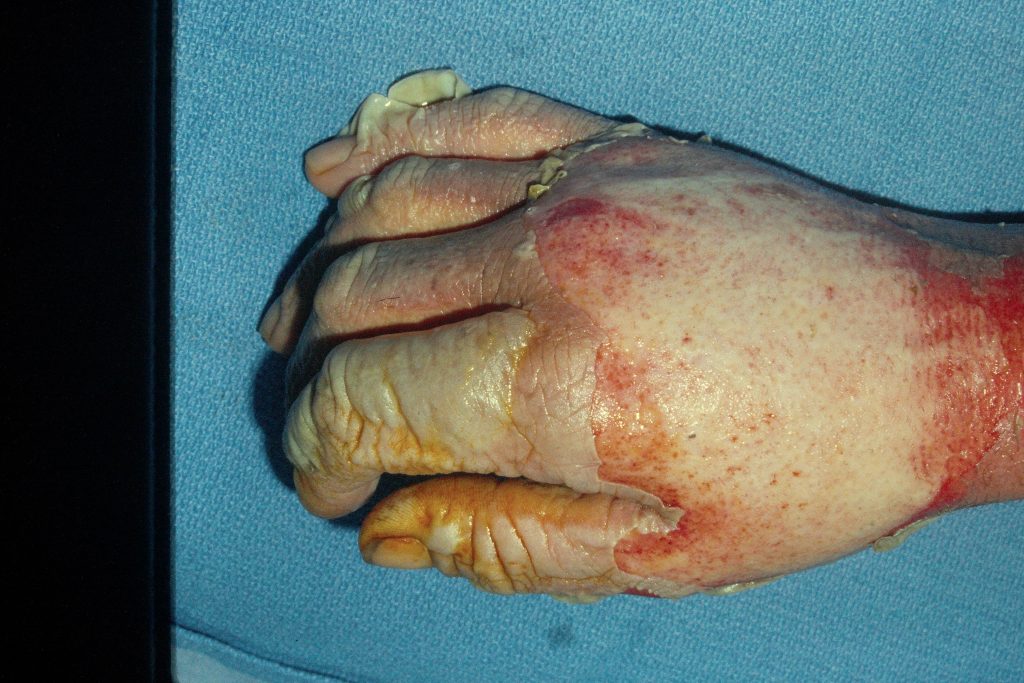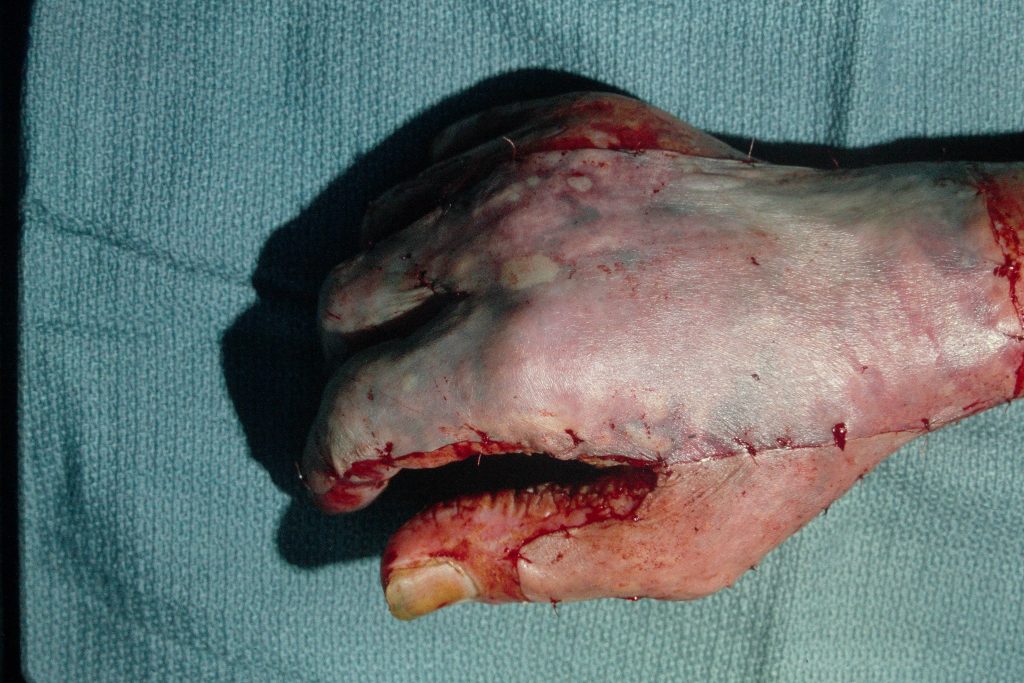Hand Burn, Deep (3rd degree) treated with Split Thickness Skin Graft (not meshed)
Elof Eriksson, MD
History:
A 29 year old man sustained a deep right (dominant) hand burn from boiling water from a bursting radiator hose. The water got trapped inside one of his gloves before he was able to remove it. He was seen in the ER and admitted to the Burn Center. There were no other injuries and his medical history was negative.
Findings:
29 year old man with a deep scald burn to his right, dominant hand. The skin over the dorsum was white, leathery and insensate. The palm had more superficial burns with blisters and redness. There was no evidence of fractures or other injuries to the hand. The rest of the examination was negative.

Fig. 1. Full and partial thickness dorsal hand burn.
Diagnosis:
Deep (3rd degree) burn to dorsum of right hand with more superficial burns to the palm of the hand.
Differential Diagnoses:
None.
Workup Required:
A thorough examination of circulation and sensation in the fingertips was first done and a need for urgent escharotomies was ruled out. Full chemistry and hematology panel were ordered.
Plan:
Local treatment of the burned areas with Silvadene and high elevation of the burned hand. The patient was scheduled for debridement and grafting in 48 hours.
Expertise Needed:
Burn Surgeon or Hand Surgeon with expertise in burns.
Treatment:
2 days later, the patient was taken to the OR and under general anesthesia with an arm tourniquet applied the burn was first excised tangentially. When the tourniquet was released, there was punctate bleeding in all the excised areas. A split thickness skin graft, 12/1000 inch thick was taken from the upper, anterior left thigh. The skin graft was sutured in place with the fingers in flexion and the graft was also ‘pie crusted’ for drainage. An interface dressing, a moist foam dressing, an elastic wrap and a volar splint were applied with the finders in flexion.

Fig. 2. The burned hand after debridement by tangential excision.

Fig. 3. The hand after split thickness skin grafting.
Follow Up:
3 days postoperatively, the dressing was changed down to the interface dressing which was left in place, and the outer dressings and the splint were then replaced. The patient was discharged with hand elevation and asked to return in one week.
2 weeks after grafting, there was complete take of the graft and the patient was referred for hand therapy. He continued to recover uneventfully and 3 months later he was completely healed with full range of motion.

Fig. 4. The healed hand 6 months after grafting.

Fig. 5. The hand in flexion.
References
Split thickness skin graft versus application of the temporary skin substitute suprathel in the treatment of deep dermal hand burns: a retrospective cohort study of scar elasticity and perfusion
Comparison of non-surgical methods for the treatment of deep partial thickness skin burns of the hand
Early excision and skin grafting versus delayed skin grafting in deep hand burns (a randomised clinical controlled trial)
https://pubmed.ncbi.nlm.nih/34557334
https://pubmed.ncbi.nlm.nih/29032975
https://pubmed.ncbi.nlm.nih/20537468

